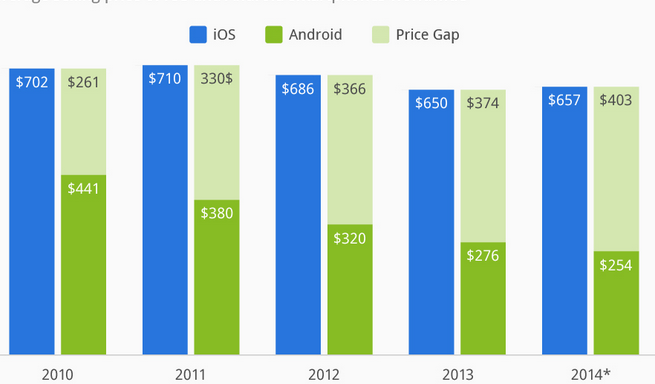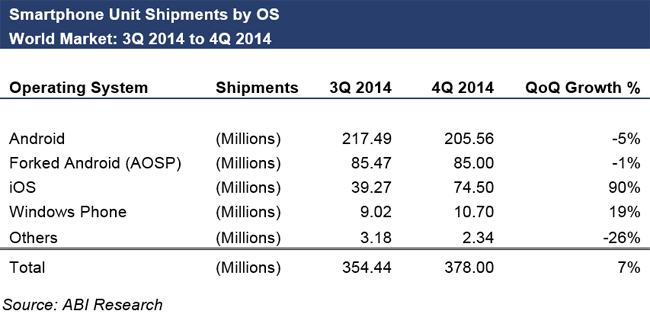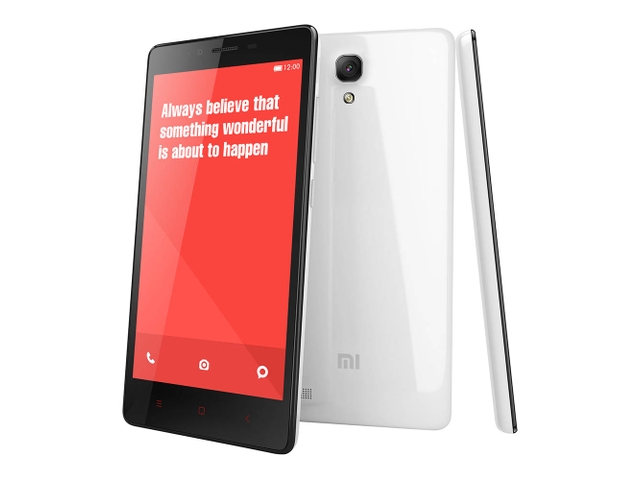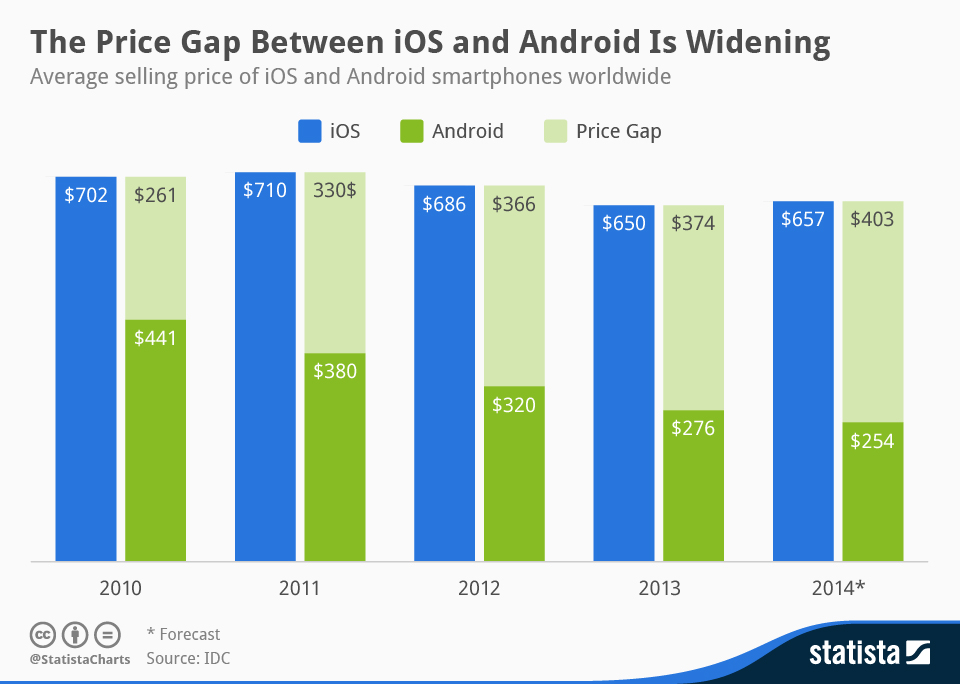

The Wall Street Journal just revealed new ABI research that suggests the cost disparity between Android and iOS smartphones is greater than ever. As the average price for an Apple iPhone jumped from $600 to $687 in twelve months, the average price of an Android phone fell from $350 to $254 in the same amount of time. Android shipments also fell for the first time ever in Q4 of last year.
And there’s a good reason why this is happening.
Most Consumers Prefer Cheaper Phones
Android is not in trouble. In fact, they’re doing quite well. Global revenue is at an all-time high and they command an impressive near-80% worldwide market share. This is mostly due to their affordable price and availability.
Growing smartphone markets around the world choose Android devices over iOS because they’re cheaper and cost on average between $30 and $50. That’s a great bargain when you consider the average earnings of this population segment range from $2,000 to $4,000.
Top 10 Smartphone Market for Growth in 2015
- India
- China
- Indonesia
- South Africa
- Brazil
- Pakistan
- Nigeria
- Egypt
- Vietnam
- Bangladesh
These are the same markets that were late adopters of feature phones about a decade earlier. The reason they’re just jumping onboard the smartphone bandwagon is simple: They keep their devices longer. The first company on that list – India – owns their smartphone an average of 8 years before choosing to upgrade.
These numbers not only explain why Android is so popular, but also why shipments (and prices) are down.
Cheap Phones Aren’t Really Cheap

Xiaomi sells phone cheap; not cheap phones.
According to The Wall Street Journal, “the world’s growing income inequality” is largely responsible for the huge price gap between the two devices. Because the distribution of profits between these two markets mirrors the wealth between the buyers of these goods, it also explains why iPhones keep getting more expensive while Android phones keep getting cheaper.
But cheaper phones aren’t necessarily cheaper quality.
Many device manufacturers are taking advantage of being able to sell cheap smartphones in this economy. One brand in particular, Xiaomi, is selling high-quality smartphones so cheap they aren’t even making a profit. This is a bold strategy but it’s turned the Chinese startup into the third-largest smartphone maker in the world.
On the other side of the spectrum, Apple is also taking advantage of being able to sell their smartphones at a premium. Shipments of iPhones increased a whopping 90% between Q3 2014 and Q4 2014 and there are no signs of this progress slowing down – especially in America where iPhones are the best-selling mobile device.
The Gap is Widening
Apple is making strides to enter emerging markets like China but is more concerned with keeping their dominance here in America. But unlike in America, iPhones are not “just smartphones” in China – they’re considered a luxury ahead of other brands like Louis Vuitton and Hermes.
This means Apple can charge extremely high prices for their smartphones.
Apple may have been late to the show in manufacturing a large-screen device on par with Android’s, but they’re able to afford taking a loss in countries that don’t have a lot of money. Unfortunately, this also means Apple is able to take advantage of a dwindling market share by raising prices wherever they can.
And this just makes the gap even wider.

Less is More
Having good, cheap smartphones available for consumers is important because everyone needs one of these devices. Whether you live in a wealthy country like the United States or an emerging economy like India doesn’t matter; it’s never been so important to be connected with the rest of the world. Whether you decide to buy a “cheap” Android phone or an expensive Apple device is up to you.
Which one are you choosing?
